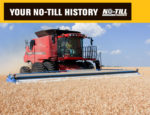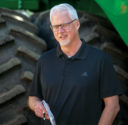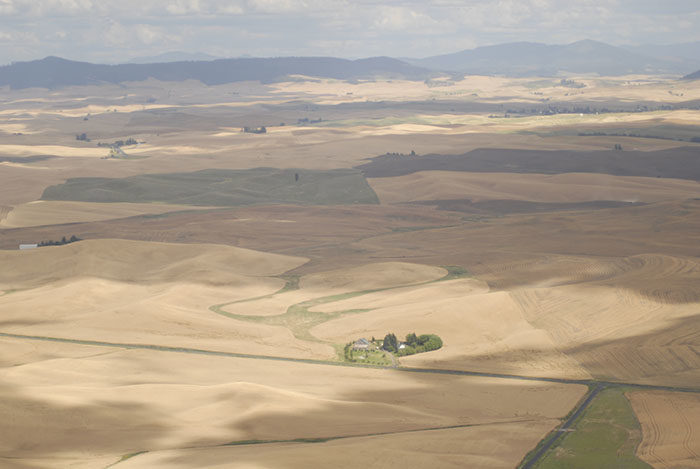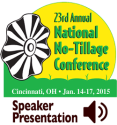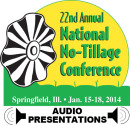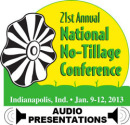Advertise Follow Us
Residue Management
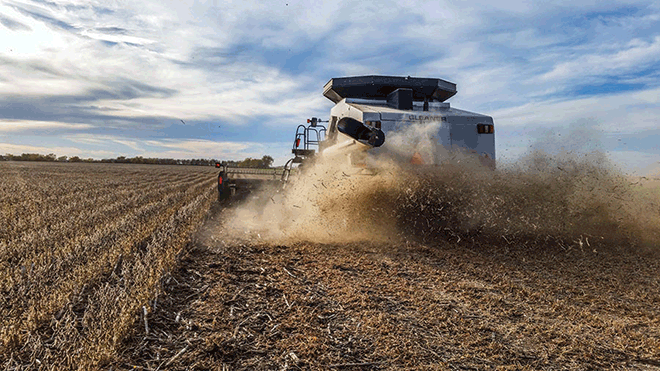
ARTICLES
How to Choose the Right Biological for Your Farm
Stripper-Header Revolutionized No-Till Wheat
What’s the Nutrient Value of Corn, Soybean & Wheat Residue?
IMAGE GALLERIES
Scenes from the Palouse
Back in 2010, No-Till Farmer editor Frank Lessiter and his son, Mike, traveled to the Palouse area of eastern Washington to visit John Aeschliman, who’s been successfully no-tilling in the region for more than 40 years. Named one of the 25 No-Till Living Legends, no-till has allowed Aeschliman to successfully farm in an area that receives as little as 12 inches annual moisture and has slopes as steep as 60%.
Click on the articles below to learn more about Aeschliman’s operation.
No-Till Works Under Tough Conditions
What I’ve Learned from No-Tilling: Do More With Less!
PRODUCTS
Managing Residue to Make No-Till More Effective
Copious amounts of residue left behind by today’s high-yielding corn, soybean and wheat hybrids and varieties can certainly create challenges. In this 28-page special no-till report, veteran no-tillers share their best tips and tricks on planter setups for handling these residue challenges without sacrificing your soil’s protection and health. For instance, processing stalks at the corn header, using biological product, responsible residue baling and even stalk grazing are other means to getting the job done.
View9 Ways to Effectively Manage No-Till Residue (NN0216BNTI)
Whether it's precision technology tips for planter setups, vertical tillage or just letting your no-tilled soils do the work, this new 40-page report will share numerous ways you can get residue in your no-tilled fields under control.
View9 Ways to Effectively Manage No-Till Residue (NN0216ANTI)
Whether it's precision technology tips for planter setups, vertical tillage or just letting your no-tilled soils do the work, this new 40-page report will share numerous ways you can get residue in your no-tilled fields under control.
ViewHow to Manage Corn Residue While Keeping it From Leaving Your Fields - Marion Calmer - NNTC 2016 Presentation - MP3 Download
Managing corn residue without it leaving your no-till fields is becoming a challenging task from the time of fall harvest to next year’s crop canopy. Because managing corn residue starts at harvest, in this presentation Marion Calmer discusses the mechanical impact that chopping corn heads, different styles of stalk rolls, stubble stompers and vertical tillage have on planting down pressure, clean seed trenches and how residue flows through planters. The western Illinois no-tiller also reviews the pros and cons of sizing corn residue, along with the economic impact it has on soil temperatures, soil moisture, earthworm populations, nutrient release, nitrogen tie-up and, ultimately, yield response.
View9 Ways to Effectively Manage No-Till Residue
Whether it's precision technology tips for planter setups, vertical tillage or just letting your no-tilled soils do the work, this new 40-page report will share numerous ways you can get residue in your no-tilled fields under control.
ViewCombine Settings To Manage No-Till Residue, Harvest Top Yields - Marion Calmer - NNTC 2015 Presentation - MP3 Download
Marion Calmer takes corn harvest seriously. The no-tiller from Alpha, Ill., knows a properly adjusted combine will allow him to harvest every kernel possible, but he needs to process residue so he can no-till next year’s crop with limited interference from last year’s trash.
ViewHow To Manage The Breakdown Of Crop Residue - Doug Miller - NNTC 2015 Presentation - MP3 Download
Undecayed corn stalks and other plant residue can lead to disease and insect infestations, soils slow to warm in the spring, volunteer corn and challenges for planting equipment and seedling emergence. And while residue provides protection to soils, it’s a source of valuable nutrients to the following crop when released properly.
ViewGetting More From Your Farm Tires
Tire Technologies, Tips For Taking On Today's Tough No-Till Residue - Scott Sloan (NNTC 2014 Presentation) - MP3 Download
Manager of Titan Tire Scott Sloan takes you through tools and practices available today that can help you avoid or limit tire damage.
ViewNo-Till Corn And Nitrification Inhibitors - A Best-Management Recipe (NNTC 2013 Presentation) - MP3 Download
In this presentation, agronomist Tony Vyn shows how nitrogen rates and timing impact corn yields and air quality and how no-tillers can claim partial credit for improving air quality.
View



